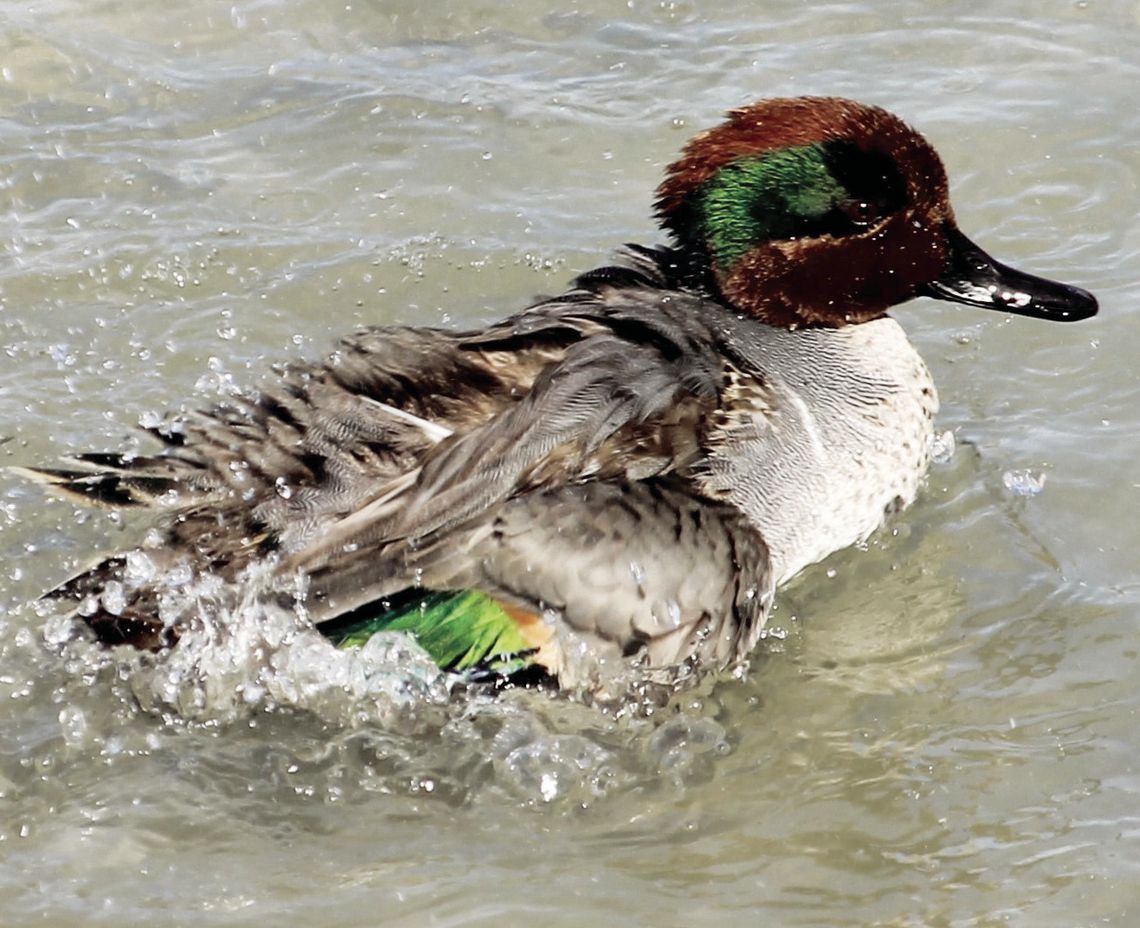With utmost respect to the historical naturalists, sometimes when I see the common name of an animal, I wish I could go back in time to when it was appointed to carry that name.
Because honestly, there are times that alternative nomenclature would have been superior. One such case of this is a species of small, but beautiful nonetheless, species of waterfowl which I would have named the Green-masked Duck but is known as the Green-winged Teal.
The Green-winged Teal (Anas crecca) is one of seven species of “dabbling” ducks that call Texas home.
This genus is represented by more familiar Mallards and Northern Pintails. It is a migratory species that resides permanently in a stretch that encompasses the states of Colorado, Wyoming, Idaho, and eastern Oregon. The remaining populations reside primarily in Canada during the summer months and along the southern states, including Texas, during the colder months.
This intricately patterned waterfowl is the smallest of the “dabbling” ducks with adults only attaining a body length of less than 16 inches and a wingspan of right around two feet. The back, sides, and wings on males (known as drakes) are reticulated gray with a vertical white stripe that delineates the buff-colored, black spotted chest. There is a small green patch on the upper wings that give this species its namesake.
However, the most distinguishing characteristic is the chestnut-colored head that is adorned with a glossy green patch that extends from the eye to the neck. This green patch is bordered on the bottom by a thin white line. The bill is black, the legs are gray, and the tail is yellowish.
Females are significantly duller in coloration and superficially look like females of other species of “dabblers” with their brown body with buff mottling.
The small green patch is the diagnostic character on females.
This avian species prefers shallow freshwater in the forms of marshes, inland lakes and cattle tanks where it can forage in shallow water by skimming the surface of the water or by “dabbling”. This refers to the way it obtains most of its plant matter diet. Dabbling species will tip their tails and bodies up in the air while “dabbing” their heads and necks underneath the surface.
The Green-winged Teal prefers to live in small flocks, often only in groups of 4 to 5 pairs. It is a monogamous species, and during the breeding season, females will construct a simplistic nest in a hollow depression where she will lay between 6 and 18 almost two-inch long muted white or muted olive-colored eggs. The incubation period lasts for just three weeks and is performed by the female. Once the eggs hatch, the young leave the nest within two days of hatching. The female will tend to the offspring for over a month until the young are ready to fly. This species typically only produces one brood annually.
Studies have shown that the population dynamics of this species are stable and are quite abundant in many areas. As more than 90% of this species winters south of the US, cooperation with other governments is a must to administer any efforts of conservation.





















